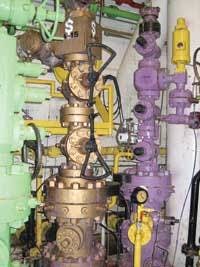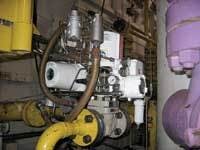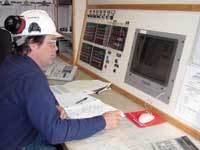Smart Valve Stabilizes Oil Well Performance, Increases Revenue
Installed in 1967, Unocal’s Monopod platform in Alaska’s Cook Inlet near Anchorage uses a gas-lift method to extract oil on most of its 16 wells, and with good results.
Components of the produced fluid - oil, water and natural gas - are separated at the surface. Gas is then re-compressed and reused in the gas-lift cycle. On one of the wells, though, too much gas was required to bring up too little oil.
“The platform can only supply 20 million standard cubic feet a day of compressed gas and this wasn’t enough to bring all of the wells to full capacity,” said Unocal platform lead operator Greg Geller.
To alleviate the problem, Unocal recently began conversion to a lift process that employs an intelligent-design jet pump system, StarPac II, from Flowserve Corp. Instead of gas, the pump uses seawater and a Venturi effect to lift oil up from the bottom of the well bore.
“This is the first known application of StarPac to control the motive water to a downhole jet pump in an oil well,” says Joe Gross, president, Alpine Valve Control Systems, a Flowserve distributor.
The unit regulates both gas and fluid flow. Built with the Flowserve Valtek ChannelStream five-stage anti-cavitation trim, it also mitigates problems associated with cavitation, which occurs when reduced pressure produces vapor bubbles that can damage the valve trim and downstream equipment. The trim eliminates cavitation even under the most severe liquid applications. Its patented design also enables easy maintenance and promotes long life.
The Unocal Monopod production team chose StarPac because it provides both flow measurement and flow control in one device. The team also sees benefits in its remote operation and extensive data collection features, as evidenced by its success on the gas-lift application.
“When you combine the cavitation control of the ChannelStream design with other great features, it presents a wide range of application possibilities for flow control of water,” says Gross. “We’re looking forward to seeing Unocal’s results using it and a jet pump to produce oil from this well.”
Contact: Karlin Wilkes, Flowserve Flow Control product marketing manager, 801-489-2645 or [email protected].




